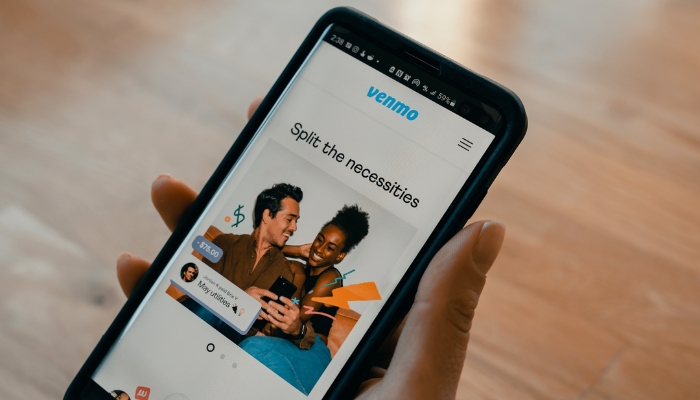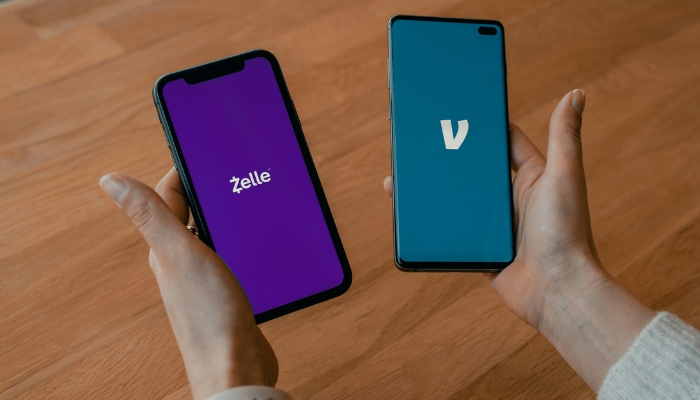
You’re ready to join the Venmo community, but there’s one last step: verifying your identity. It’s crucial, yet it can be confusing. Don’t worry, we’ve got you covered.
To verify your identity on Venmo, provide your personal details like your name, address, and SSN’s last four digits. In some cases, a photo ID may be required. This verification secures your account and unlocks additional features and higher limits.
This guide will walk you through each step, ensuring you understand why it’s important and how it safeguards your account. Plus, if you hit any snags, we’ll help you troubleshoot. Let’s get your Venmo account up and running securely!
Table of contents
Setting Up Your Venmo Account
To set up your Venmo account, you’ll first need to download the app from your device’s application store. Once downloaded, the mobile app will guide you through the initial stages of setting up your profile. Enter your email address to serve as your primary contact point on the platform. Use an email that you frequently check, as we will send important information, including Venmo identity verification, to this address.
Next, you’ll have to link your bank accounts to your profile. In the ‘Payments Methods’ section of the app, you can add multiple bank accounts for greater flexibility in your transactions. As part of Venmo’s security measures, your bank accounts will go through a verification process to ensure they’re indeed yours.
Subsequently, you’ll create a business profile. Within the business profile settings menu, you’ll be able to customize your profile by adding a profile picture, writing a short bio, and setting your preferred payment methods.
Once all these steps are done, you’re ready to proceed to the next stage which involves Venmo identity verification. In the following section, we’ll delve deeper into understanding Venmo’s identity verification process.
Understanding Venmo’s Identity Verification

Now that you’ve set up your account, you’re moving on to understanding Venmo’s identity verification process. This process, like most online payment platforms, is designed to protect both you and other users from fraud.
Venmo’s identity verification begins when you hit certain transaction levels, or if there are reasons to suspect fraudulent activity. During the verification process, Venmo will ask for personal information such as your legal name, date of birth, and social security number. This is standard practice for online payment platforms and is a requirement under U.S. financial regulations.
It’s crucial to provide accurate information during this process. If the information you provide doesn’t match with what’s on file with the Social Security Administration, you might encounter difficulties. Keep in mind that Venmo uses advanced security measures to protect your information, so you can provide your social security number with confidence.
Steps to Verify Your Identity
Continuing on from understanding Venmo’s identity verification process, let’s dive into the steps you’ll need to take to verify your identity on the platform. This process is designed to safeguard your account and maintain financial security.
Firstly, navigate to ‘Settings’ in your Venmo app and select ‘Identity Verification’. Follow the screen prompts, providing the required information, which includes your social security number or tax ID. Be sure to input this information accurately to avoid any issues down the line.
Next, you’ll be asked to submit a clear image of your government-issued identification. This could be a passport, driver’s license, or state ID. Ensure the image is clear, visible, and contains all necessary info, including your picture, name, and ID number.
Once you’ve submitted your ID, Venmo will begin the identity verification process. This process may take a few days to complete as the system cross-checks the information you’ve provided against public records.
Lastly, you’ll receive a notification about the outcome of your identity verification. If successful, you’ve completed the steps to verify your identity on Venmo. If not, you’ll be given instructions to correct any discrepancies and redo the process.
Troubleshooting Identity Verification Issues

If you’re encountering issues during the verification process, don’t panic, there are several ways to troubleshoot and resolve these problems.
One of the most common hiccups in identity authentication on Venmo involves incorrect documentation uploads. Make sure you’ve uploaded all the necessary official identification documents as clearly and correctly as possible. This may include government-issued IDs, driver’s licenses, or passports.
If you’re still experiencing troubles, it could be an issue with the system or a more complex problem. Venmo’s customer support channels are valuable resources for troubleshooting identity verification issues. Their team is trained to assist with various problems, including those related to identity verification.
Remember, always double-check your information. An overlooked error in your name or date of birth could be the culprit behind your verification woes. It’s crucial to cross-check your Venmo details with your official identification documents to ensure consistency.
Lastly, don’t rush. Take your time in entering your details and uploading your documents. A thorough approach could save you from unnecessary troubleshooting steps.
Identity verification is a critical process that ensures the safety and authenticity of transactions on Venmo. So, despite the challenges you might face, it’s worth the effort to get it right.
Timeframe and Processing of Venmo Identity Verification
When you submit your details for Venmo identity verification, the expected duration for the process typically spans a few business days. This timeframe can vary depending on the volume of requests Venmo is handling at the time. It’s important to note that during this period, Venmo’s team reviews your submitted personal details and additional documentation to ensure everything aligns with their privacy policies and security measures.
After you’ve completed the submission, Venmo begins a one-time security check. This involves verifying the accuracy of your current address, physical address, and other personal details against a national database. This step is crucial to protect against identity crimes and ensure the safety of money transfers on the platform.
If your verification is successful, Venmo will send you a verification code via email or through the app, confirming the successful verification of your account. This code forms a part of Venmo’s enhanced security measures, aiming to keep your account and financial transactions safe.
Venmo’s customer support team will reach out to you for more details or clarification if they need additional information or if discrepancies appear in your application. It’s essential to respond promptly to these requests to avoid delays in the verification process.
Once verified, you’ll enjoy the full range of Venmo’s features, including higher transaction limits and the ability to participate in peer payment activities with ease and security. Remember, this process is a critical step in maintaining the integrity and safety of digital payment platforms like Venmo.
Consequences of Not Verifying Your Identity on Venmo

Failing to verify your identity on Venmo can lead to significant restrictions on account usage. Venmo, as a popular payment platform, adheres to strict privacy policies and security measures to safeguard its community of users. Without completing the identity verification, your account remains in a limited state.
One of the primary consequences is the impact on sending and receiving limits. Unverified accounts face much lower transaction limits, which can be a hindrance if you’re looking to use Venmo for larger amounts of money or regular money transfers. This limitation affects both personal payments and payments for businesses, making it challenging for sole proprietors or registered businesses to utilize Venmo effectively for their operations.
Moreover, without verification, you might not be able to access some of the advanced features of Venmo, such as requesting money with ease from friends or using the app for mobile payment services. Venmo designs its policy to prevent payment app scams and identity crimes, and therefore, restricts unverified accounts to basic functionalities to minimize potential risks.
In essence, not verifying your identity on Venmo means you won’t be able to fully leverage the numerous benefits and conveniences offered by this digital payment platform. It’s a necessary step to ensure a smoother user experience and maintain the solid user policy that Venmo is known for.
Keeping Your Venmo Account Secure
To keep your Venmo account secure, it’s crucial for you to implement strong safety measures, which goes beyond just verifying your identity. The platform provides various security features that you can optimize to protect your account.
Firstly, consider enabling two-factor authentication. This feature adds an extra layer of security by requiring you to provide two pieces of evidence before accessing your account. If a hacker attempts to breach your account, they’ll need to bypass this security measure, making it a formidable deterrent.
Next, pay close attention to your privacy settings. Ensure that your transactions are set to private. This reduces the risk of sensitive data exposure and aids in keeping your financial activities confidential.
Use the screen lock feature as well. It’s a simple yet effective way to prevent unauthorized access. If your device is lost or stolen, this feature will protect your account from being immediately open to malicious parties.
Lastly, don’t hesitate to contact customer support if you suspect any irregularities in your account. They can assist in investigating potential security breaches and guide you in taking necessary actions. Remember, maintaining your account’s security is an ongoing process that demands your vigilance.
Conclusion
In conclusion, verifying your identity on Venmo is a crucial step in securing your account. By understanding the process, you can swiftly navigate through the verification stages.
If issues arise, troubleshooting steps are your lifeline to resolution. Stay vigilant, maintain your account’s security regularly, and remember, a verified identity not only enhances your credibility but also ensures a seamless Venmo experience. It’s a small effort with significant payback in your digital transaction journey.
FAQs
Why is Venmo asking for my SSN and other personal information?
Venmo requests your Social Security Number (SSN) and other personal details as part of its Customer Identification Program. This is a standard practice among financial institutions to ensure security and comply with legal requirements. By collecting this information, Venmo aims to protect its community of users from identity crimes and payment app scams, ensuring a safe environment for money transfers.
Can I use Venmo without verifying my identity?
Yes, you can use Venmo without completing identity verification, but with significant limitations. Unverified accounts have lower transaction limits and restricted access to some features. This means your ability to send or receive larger amounts of money or use advanced functions of the app will be limited. Verification enhances your Venmo experience by unlocking full access to all features.
What happens if I don’t verify my identity on Venmo?
If you choose not to verify your identity, your Venmo account will remain in a restricted state. This includes lower transaction limits and limited access to certain features of the app. These restrictions are in place to safeguard against payment app identity crimes and ensure the security of all transactions on the platform. In essence, not verifying your identity means you won’t be able to fully utilize Venmo for personal payments or money transfer services.